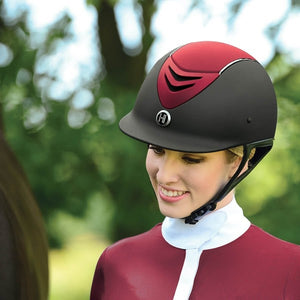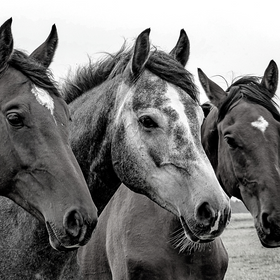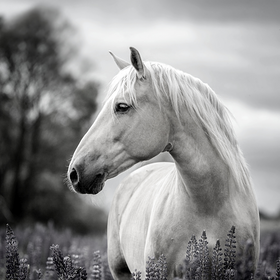
Tips for Riding in the Snow - For Horses
Horseback riding and horse ownership are not for the faint of heart. Riding in the winter takes planning and a bit of cold tolerance for you and your horse. Planning ahead and getting the right gear for you and your horse will make a big difference in your winter riding. Here are some suggestions on keeping your horse safe and comfortable during winter riding hazards.
Shoeing
If you plan to ride on slippery ground, consider shoes with pads and ice caulks. This can significantly increase your horse’s grip on wet, slippery surfaces. The pads will prevent snow from accumulating on the hoof and prevent bruising. Ice studs are added to horseshoes, similar to using studded tires in the winter. If your horse is turned out in a group, consider adding studs on the front feet only, as these can do significant damage to another horse if kicked.
Be sure to keep your farrier trims scheduled regularly for barefoot horse owners. The cold weather makes hooves more brittle and prone to chipping and cracking.
Always pick out your horse’s hooves before a ride and remove any packed snow. Packed snow can bruise the hoof, hide objects, and make walking difficult for your horse.
Remember Snow is Tiring
Riding in the snow is more challenging than riding on a normal footing. It takes a lot more energy for your horse to move in the snow, much as it does for us. Consider reducing the duration and difficulty of your ride if you are riding in deep snow.
Take Your Time with Cool Down
Cooling down can take longer in the winter when sweat sits on a long winter coat. Horses should be completely cooled down and dry before returning to their stall or pasture. Plan to work slower so your horse doesn’t sweat and require as much drying time. Using a cooler can help wick the moisture away from your horse’s coat and speed up drying time. The Ovation Turbo-Dry Cooler is designed to wick moisture three times faster than a traditional cooler. If you are short on time, this cooler is a great option.

Use a Quarter Sheet to Keep Muscles Warm
If your horse is used to wearing a blanket, consider using a quarter sheet during your ride. A quarter sheet can help keep their muscles warm and prevent a chill during your ride.
Warm Your Bits
Horses do not appreciate ice-cold bits going into their mouths. Luckily, there are several options for warming up your bits if your tack room is not heated. Consider using a commercial bit warmer, or simply place the bit in your jacket pocket with a pocket warmer while you tack up.
Watch for Hazards
There are many more hazards for winter riding with frozen, slippery ground compared to summer riding. If the ground has a snow cover, stay away from areas where you might encounter holes, branches, poles, or ice. It can be hard to see when the snow is deep and can easily injure your horse.





